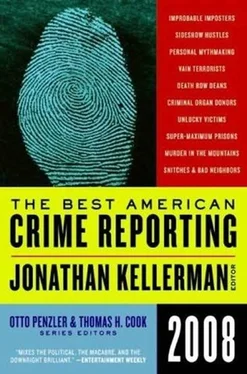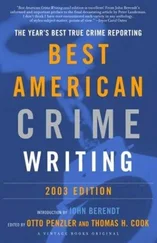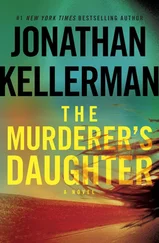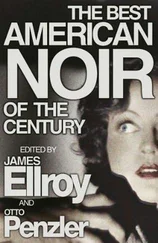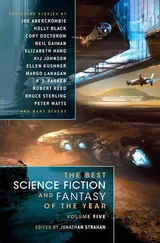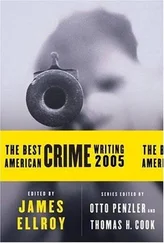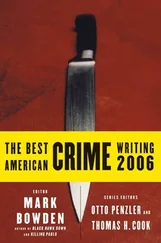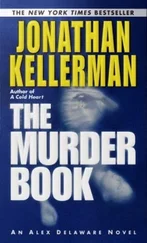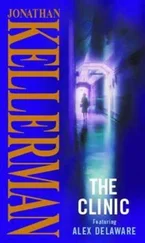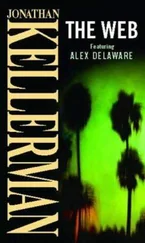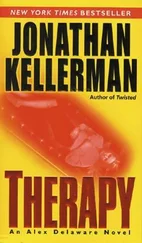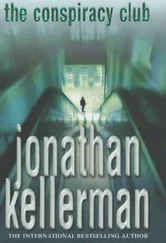The two had timed their escape poorly. Sauntering up the street just then was Tracy Love, an athletic 20-year-old with cornrows and a meticulously trimmed beard and mustache, whom everyone knew as “Boo-Boo.” Prosecutors later alleged that Boo-Boo oversaw the Bartlett Avenue drug operation. Jay and his accomplice brushed right past him. As Dowery watched, Boo-Boo pivoted and began to follow them down the hill.
Fifteen minutes later, Dowery heard the wail of police sirens and the thump-thump of a helicopter overhead. Boo-Boo strode back up Bartlett with his younger half-brother, Tamall Parker, who went by “Moo-Moo.” “I got that motherfucker, six times in the chest,” Dowery later recalled Boo-Boo shouting-ostensibly to his crew down the street, but loudly enough that anyone out on the block could hear. “Next time, one of y’all gonna do it. I’m tired of doing this shit.”
According to police and prosecutors, this is what happened after Jay and his partner, a man police would identify as Joseph Bassett, robbed Reds and left Bartlett Avenue: Boo-Boo went to find Moo-Moo. They got into a white Lexus with sparkling chrome hubcaps and began cruising the neighborhood, hunting for Jay and Bassett. Unaware they were being pursued, Jay and Bassett met up with a couple of prostitutes a few blocks away. Jay knew one of them, Doris Dickerson. He told her about the robbery and offered her drugs. She said she would catch up with him in a minute, and walked into an alley. Bassett also left for a few minutes. Just as Doris and Jay were about to meet back up, at the corner of Bonaparte and Robb, Boo-Boo and Moo-Moo spotted Jay. Boo-Boo let Moo-Moo out of the car, then drove around the corner and waited. Moo-Moo tugged the hood of his sweatshirt up around his face, approached Jay, and pulled out a 9-mm handgun. He opened up, firing at least 13 times. The bullets punched holes in Jay’s chest and abdomen; at least one smashed into his skull.
James Sylvester Wise Jr. was dead-the 229th murder of the year in a city that would rack up 278 by the end of December. Although 10 people called 911 to report the shooting, many refused to give their names. Six told the emergency operators that they did not want to talk to the police when they arrived. One caller, John Craddock, said he had seen a man running down the street and jumping into a white Lexus. He could not see the man’s face, but he thought he could make out part of the license plate-a blue-and-white temporary tag with the numbers 3, 4, and 9. Police dispatchers put out a description of the car, but to no avail. Officers canvassed the block but turned up no additional witnesses or information. None of the three who knew the most about the killing-Dowery, Bassett, or Dickerson-came forward.
A MAN GUNNED DOWN on a busy street. No identifying witnesses; no suspects. In this, James Wise’s murder was typical. Colonel Frederick Bealefeld III, Baltimore’s chief of detectives, says the police used to be able to rely on people’s consciences and sense of civic duty to generate leads in murder investigations. But today, few witnesses are willing to offer information, even anonymously. “How hard is it for someone to get on the phone and say…‘The guy who shot up this block-it is wrong, here’s who that person is’?” Bealefeld asks. “Yet we don’t get a ton of those kinds of calls. And if we graphed it out, if we tracked it over the years, you would see a very clear decline.”
A 26-year veteran of the force and the grandson of a cop, Bealefeld has seen these changes firsthand. His grandfather walked a beat on Greenmount Avenue, not far from Bartlett. In 30 years with the department, he fired his gun exactly once in the line of duty. “No way he could walk that beat and do that now,” Bealefeld says. “He took it for granted that the community respected him. Today’s police can’t take that for granted.” By the time Bealefeld joined the force, in 1980, things had become much more dangerous for both the police and the citizens of Baltimore. But during the ’80s, working narcotics, he could still find confidential informants with relative ease. Over time, that too started to change.
Bealefeld says he does not want to underestimate the fear people feel on the streets, or their lack of trust in the law. But he thinks witness intimidation has also become a cover for indifference. “How do I separate your intransigence to take part in a civic responsibility, and a moral responsibility, from your alleged fear?” he asks, the anger rising in his voice. “‘I am not doing it, because I am afraid’-that is easy to say. You may not be doing it because you are a jerk and don’t care about anybody but yourself and have no love for your fellow man.”
Bealefeld is right that disentangling fear from other factors is not easy. But when I spoke with people in the blocks near where James Wise was murdered, it was the fear that was most palpable. “Round here it’s not a good idea to talk to the police,” Jacob Smith, a thoughtful 13-year-old walking home from school in East Baltimore, told me. “People, they like, if they know you talk to the police, they don’t be around you. And if people talk on them and they get locked up, their friends come up on you and hurt you or something.” (The ostracism and retaliation he spoke of got wide airing as a plotline last season in HBO’s The Wire , set in Baltimore and created by David Simon, a former crime reporter, and Ed Burns, a former police officer: A teenager thought by his peers to have snitched was beaten, and eventually his house was firebombed.)
All over Baltimore, whenever I asked people about cooperating with the law, I got the same response. “Why would you talk to the police? All you are doing is putting a label on yourself,” said Barry Nelson, a 42-year-old part-time handyman who was waiting for a meal from a charity the day I met him. “They ain’t going to be back to protect you after you done told on some cats.” Randolph Jones, a retiree who was sweeping leaves from the sidewalk in front of his house in Northwest Baltimore, said he would call the police if something happened on his block. But the drug dealing and shootings on the next block over? He won’t pick up the phone. Jones said the police try, but as soon as they arrest one corner boy, another moves in. “You got to live here, and the police can’t do much,” he said. “You don’t want to end up like that family in East Baltimore, the Dawsons.”
The Dawsons come up in almost every conversation about reluctant witnesses in Baltimore. Angela Dawson had tried to shoo drug dealers away from the sidewalk outside the East Baltimore row house where she lived with her husband, Carnell, and their five children. She had frequently called the police. The dealers decided to strike back. In October 2002, the Dawsons’ house was firebombed. Angela Dawson and all her children were killed in the blaze; Carnell Dawson died in the hospital a week later. A drug dealer named Darrell Brooks was convicted of the crime and is serving life without parole. But the sentence has done little to reassure potential witnesses. More than four years later, the Dawsons still haunt the city.
JOHN DOWERY knew Boo-Boo and Moo-Moo had shot someone; he prayed that it wasn’t Jay, that it was the other guy. But the next day’s newspaper confirmed his fear about his friend. Jay’s death shook Dowery. But it also made him more determined to get his life back on track. And in the tragedy of his friend’s murder, Dowery sensed opportunity. If he told the police what he knew about the killing, perhaps he could get a lighter sentence on his gun charge. On the other hand, talking was dangerous: If Boo-Boo and Moo-Moo found out, they might come after him or his family. So Dowery struggled with the decision. A day went by, then a week. Then he picked up the phone and called his public defender.
Читать дальше
